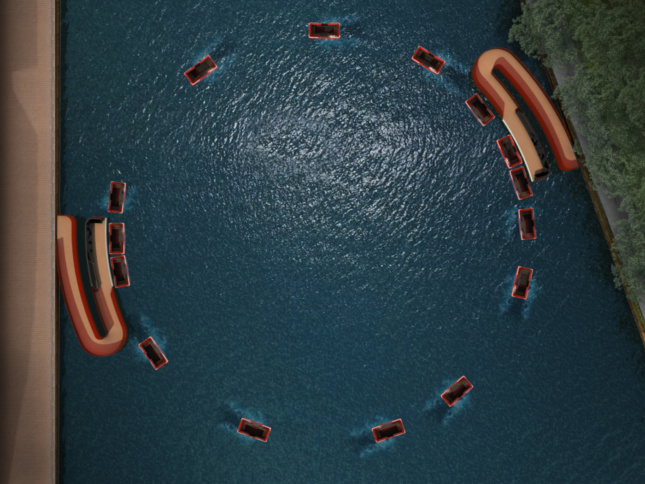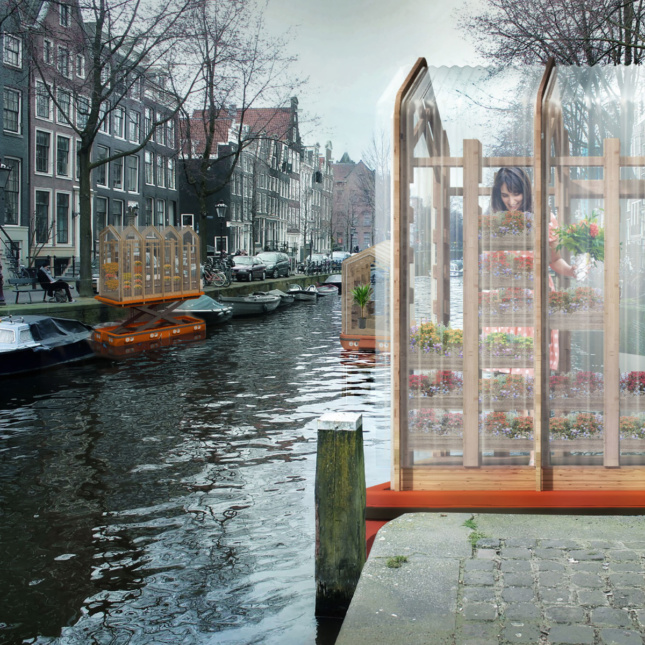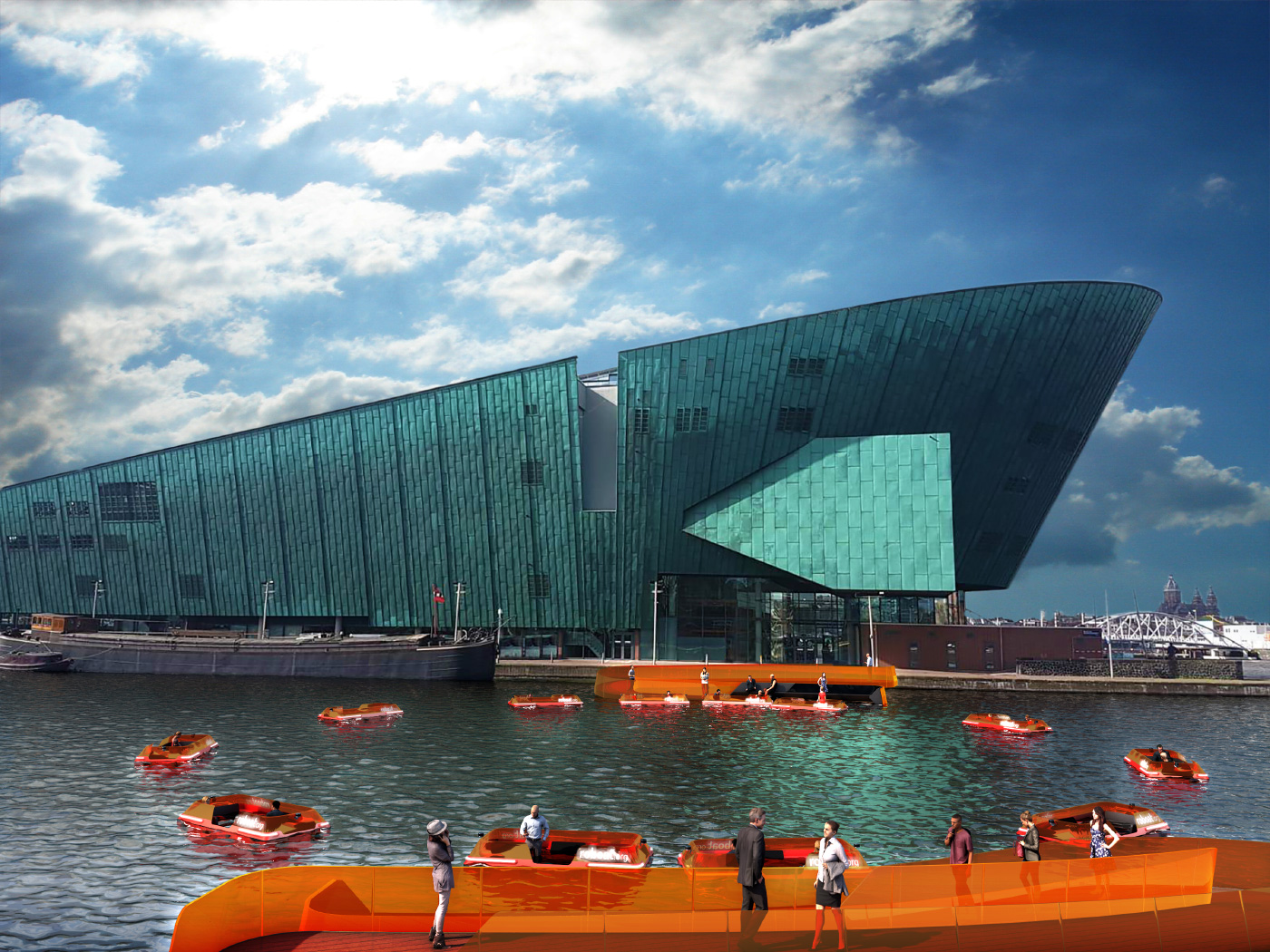A joint team of researchers at the Amsterdam Institute for Advanced Metropolis Solutions (AMS) and the Massachusetts Institute of Technology Senseable City Lab have developed what they’re calling “the world’s first dynamic” bridge. Powered by a fleet of autonomous electric boats, roundAround will connect the Amsterdam City Center with the developing Marineterrein Amsterdam, a partly decommissioned military base that is home to the AMS Institute and a living lab for urban innovation. The project will be the first full-scale application of the Roboat project, a five-year research collaboration between the two schools.
Building permanent infrastructure can be costly, complex, and a time-consuming process, particularly across the highly trafficked canals of Amsterdam. Researchers envision roundAround as a quick way to build new connections in Amsterdam and increase the use of canals to alleviate congestion as the city continues to grow and change.

RoundAround employs a fleet of roboats that move in a continuous circle across the canal, like perfectly synchronized Busby Berkeley aquatic number. They move along a pre-programmed route equipped with cameras and Lidar technology that can detect obstacles or changes in the water and alter course as necessary using its four thrusters. As they approach the specialized docking platform, the roboats lock into a guide rail to provide additional stability, allowing people to board or exit without stopping. The research team estimates that the system could provide transport for hundreds of people every day, along with other benefits. “Involving citizens and visitors of the area roundAround would provide the research project with valuable continuous feedback loops,” said Stephan van Dijk, head of research & valorization at AMS. The collected data will help roboats learn and further improve their performance.
But Bridges are just the beginning.

The roboats were designed using a modular system that can accommodate various decks to provide different services. Researchers are hoping they will one day collect and transport garbage, provide on-demand water taxi or towing service, and securely attach to create temporary platforms for performances or “pop-up” shops. Secure connections are achieved through a novel laser-guided ball-and-socket latching mechanism. Researchers are working on improvements to the latching system, which has potential applications far beyond creating secure aquatic platforms, including cargo handling, charging stations, and even docking in space.
Although autonomous cars may be getting all the headlines, Amsterdam is building its future infrastructure on the backs of autonomous boats. And what begins with one “bridge” in one city may one day connect and activate waterways worldwide.
